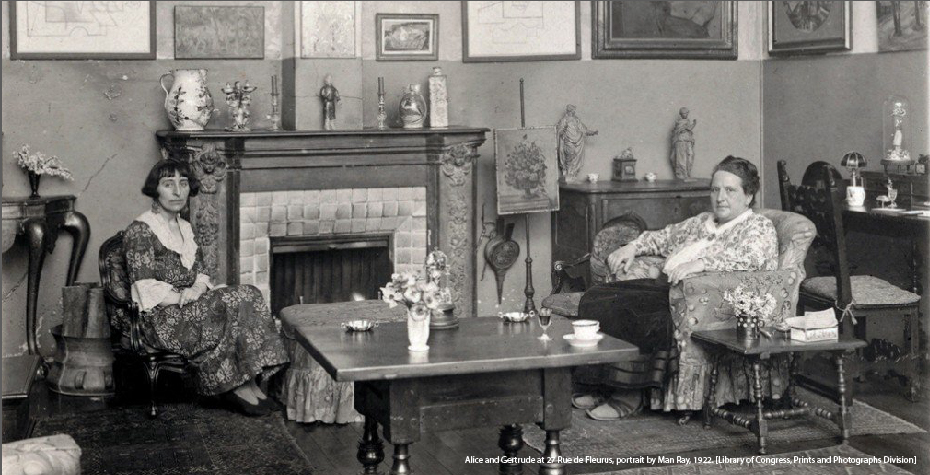Alice T. Friedman’s Article Queer Old Things Shows How Alice B. Toklas and Gertrude Stein Constructed A Public Image That Challenged Accepted Gender Roles

Alice T. Friedman, the Grace Slack McNeil Professor of the History of American Art, has done groundbreaking research into how gay and lesbian activists have used images and narratives to create zones of “queer space” within the dominant culture.
Friedman’s scholarship on queer theory has led to her selection as the inaugural recipient of the Arcus/Places Prize, awarded through the Arcus Endowment at the College of Environmental Design at the University of California, Berkeley. “I am very proud to be the first recipient of the Arcus/Places Prize, which recognizes outstanding scholarship ‘at the intersection of gender, sexuality and the built environment,’” she says.
As part of that honor, Friedman recently gave a lecture titled Queer Old Things: Image, Myth and Memory in 20th Century Paris at the College of Environmental Design. The lecture, based on a longer article published online in PlacesJournal earlier this month, was written in part during her residency at Berkeley in 2014, with the support of the Arcus Endowment.
Friedman offers a critical analysis of queer space through an examination of key episodes in the lives of lesbian activists and expatriates Gertrude Stein, Alice B. Toklas, Janet Flanner, Solita Solano, and Margaret Anderson, who redefined the politics of image-making in Paris from the 1920s until the 1960s. She focuses on the relationship between Stein and Toklas, who challenged—and were challenged by—the difficulties lesbians faced in the heterocentric, male-dominant society of that time. She also examines the life and work of Janet Flanner, the New Yorker’s Paris correspondent from 1925 to 1975.
“There are huge differences in culture, values, and private desires from one person and one generation to another, and there are huge challenges for historians in finding out about people’s private lives and homes, especially when they didn’t want anyone to know about them,” says Friedman. “All of the people I wrote about had very carefully constructed public personas, but all of them were really very different from their public selves in their private lives.”
Friedman’s research illustrates the dichotomy of the public-private persona, which allowed activists to create a new paradigm for queer space, at great personal cost. “It takes real effort to construct an image that can be maintained and defended in public, and the dangers of being unmasked as a gay person were and are obviously substantial,” she says.
“What we find out from the case of Gertrude and Alice is that their public image and power as a couple held up when there were two of them,” Friedman says, “but it broke down completely after Gertrude’s death in the face of homophobia, combined with misogyny, Alice’s old age and widowhood, and struggles over Gertrude’s financial legacy among members of the Stein family themselves.”
Friedman hopes the article in Places will benefit “scholars and people interested both in queer history and in advancing our working methods and analysis as historians. It’s just a small contribution—many people are at work in this area, and I have depended on their contributions.”
